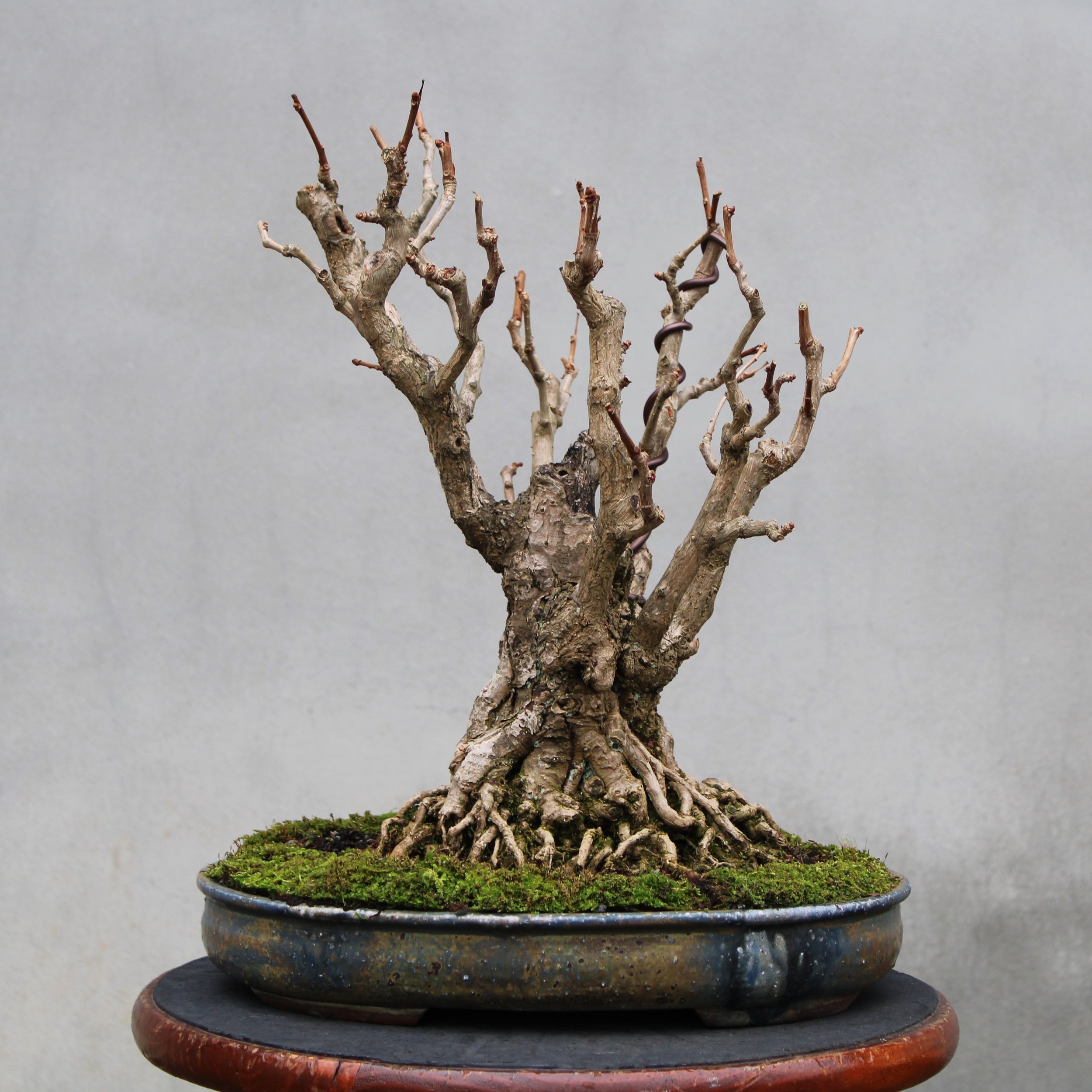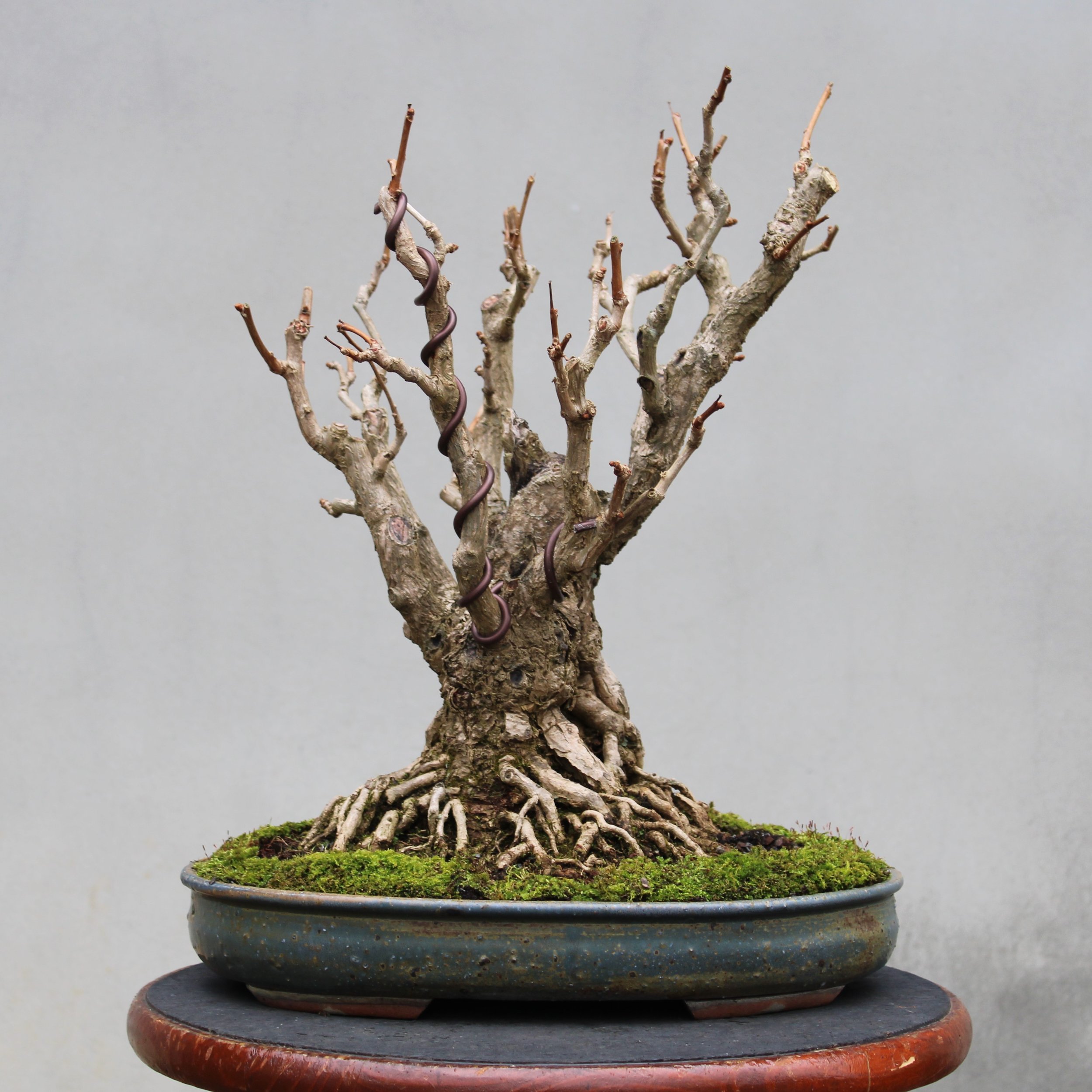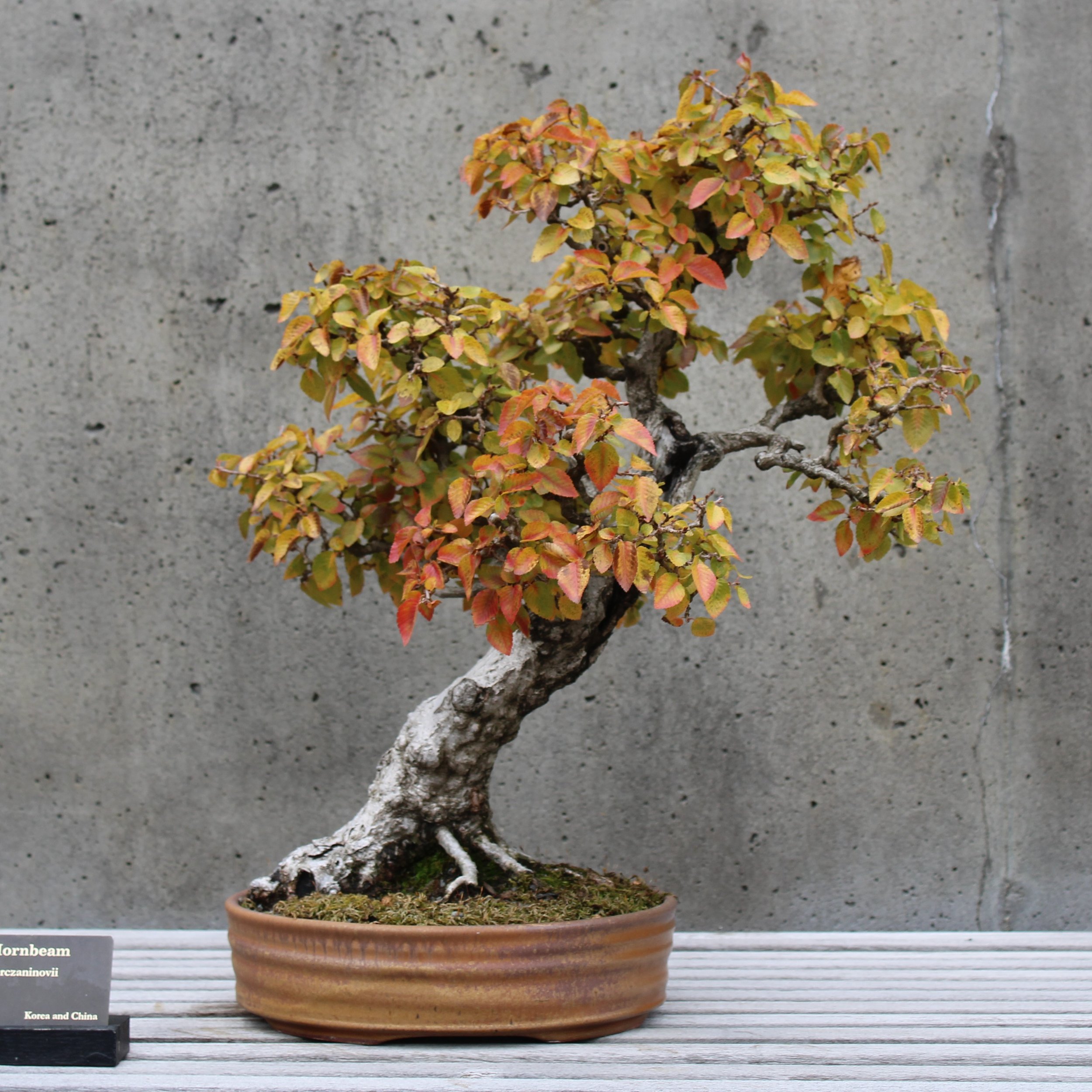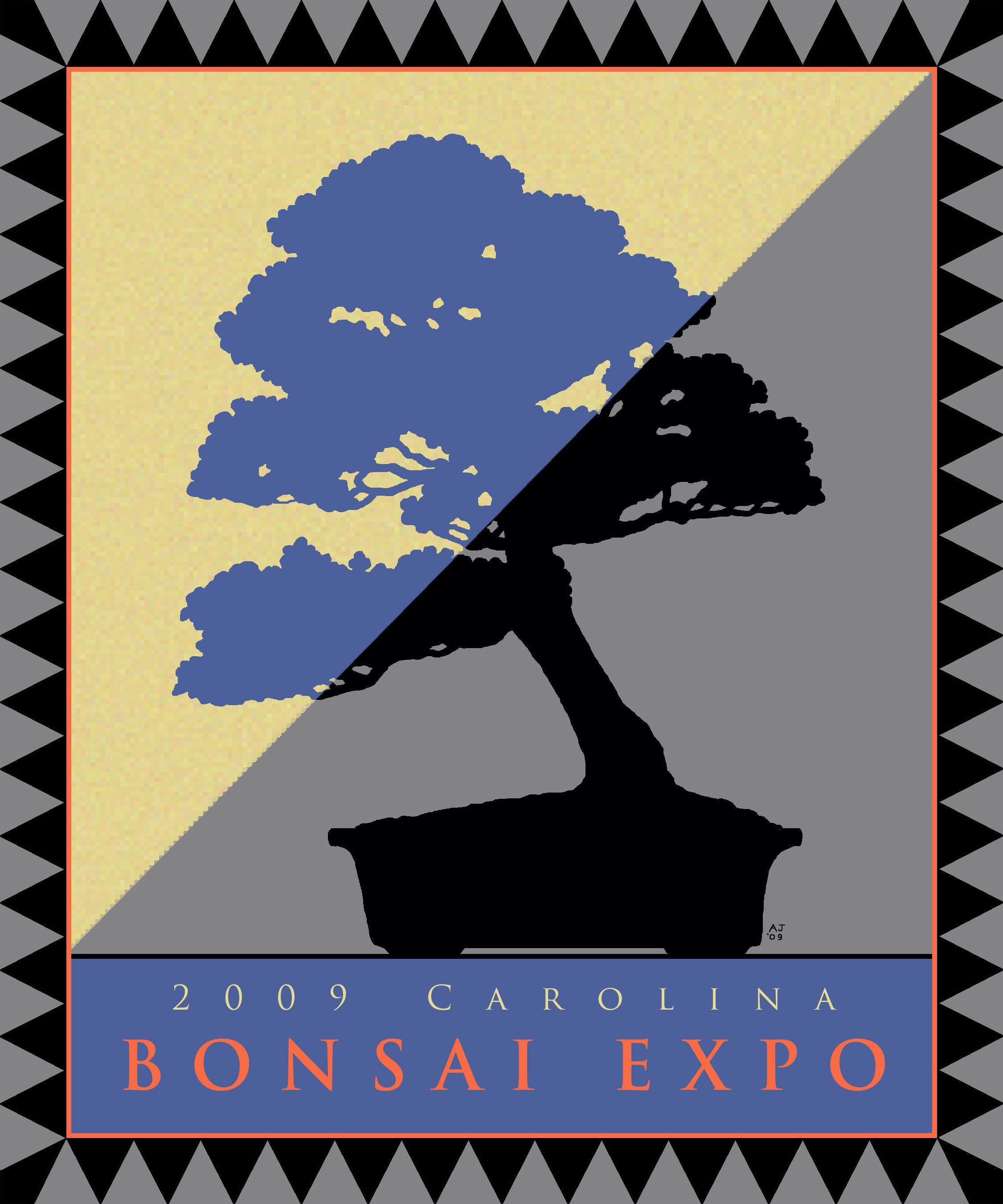Bev
I was lost and tired, driving through the streets of an unfamiliar city at night after a long day on the road. I was frustrated. This was in 1995, before cell phones and GPS, and I was trying to find my way with hand-written directions. My itinerary that day included several stops at destinations scattered across half of North Carolina, and as I drove up and down the streets of Charlotte trying to find my way to the final stop on my list I was already more than two hours late. This last bit of business involved picking up some materials we needed that couldn't be bought locally. I had learned of a member of the Bonsai Society of the Carolinas who sold bonsai supplies on the side and he had what we needed, so I made arrangements to drive out to his house to pick up the stuff. Now paying for shipping sounded like a good idea. What didn't sound like a good idea was failing to show up for the appointment, but I was quickly losing faith. Just at the very point I was ready to give up and head for home, the street name I was looking for miraculously appeared on a sign right in front of me and I made the turn.
It was an extremely nice neighborhood not far from downtown. The street was narrow and lined on either side with tall, stately oak trees, and I glided slowly under their canopies while watching for the house number. I found the house I was looking for and parked out front, then walked to the front door thinking about the apology I would need to make. The porch light was already on and when I rang the bell the door opened almost right away. Standing there was a man in his late-seventies, average height, a little stooped from his age but otherwise straight and upright in bearing, very neat in his appearance. He had the look of someone unaccustomed to being kept waiting, but he smiled politely and maintained a dignified demeanor. "Hello Dr. Armstrong," I said. "I'm sorry I'm so late!"
Such was the unlikely beginning of a friendship that was to grow and continue for the next dozen years, and one that profoundly influenced the development of bonsai at The North Carolina Arboretum.
Dr. Beverly Armstrong in his working days Attribution: www.ceenta.com
Beverly Weller Armstrong was born in Pennsylvania in 1917. He graduated from Syracuse University in New York and the Syracuse University College of Medicine before serving in the US Army as an MD during World War II. He was stationed first in Europe and then in Japan and the Philippines. He ultimately achieved the rank of Major. After his Army service Dr. Armstrong practiced medicine for thirty-six years at the Charlotte Ear, Nose and Throat Hospital. During his career Dr. Armstrong established himself as one of the leading specialists in his field, acquiring a reputation for innovative procedures and the invention of new instruments and operations. Perhaps his greatest medical achievement was the invention of the modern ear tube, a ventilating device for treating infections of the middle ear. Now commonly used around the world, this device has brought relief to millions of children. Dr. Armstrong spent years as a consulting specialist to the North Carolina School for the Deaf. He donated back all he was paid for his work, specifying the money should be used in support of continuing education for the school's staff. Dr. Armstrong also served as president of the American Laryngological, Rhinological and Otological Society. In 1972 he received the Gold Medal Award from the Deafness Research Foundation in recognition of his exemplary contributions to field of otologic study. Not many people succeed in their professions to the degree that Dr. Armstrong succeeded in his.
By the time I met Dr. Armstrong his medical career was long behind him, but he had attained a high level of regional prominence in a new endeavor: bonsai. He had first encountered bonsai at the Southern Spring Show in the early 70s, when he came across a display provided by the Bonsai Society of the Carolinas (BSC). He was so taken with the little trees that he soon joined that club, which is the oldest such organization in North Carolina and has always been based in Charlotte. Skills developed in working with tiny objects like the bones of a human ear served Dr. Armstrong well in his new pastime, and soon people were coming to him for bonsai advice and lessons. He served for a while as president of the BSC and held other officer positions over the years, and finally settled into a ongoing roll as goodwill ambassador for the club. Everyone in the bonsai community who knew Dr. Armstrong thought well of him, and respected him for his knowledge and gentlemanly comportment.
Sometime early in our acquaintance Dr. Armstrong asked that I stop calling him Dr. Armstrong and instead call him by Bev, as his friends did. I was honored to do so. Visiting with the BSC as a guest instructor became an annual event for me, affording opportunities to get to know Bev and other members of the club. In the beginning my visits to Charlotte were conducted as day trips, but after a couple of years, Bev invited me to make the travel easier by extending my visit to two days, staying overnight as a guest at his house. I readily accepted the offer. For the next ten years, every time I had occasion to travel to Charlotte if I could spare the extra day, I would plan a visit with Bev and his wife, Ann. She was a gardening expert and a writer, with ties to what would ultimately become the JC Raulston Arboretum. Ann designed, planted and maintained an exquisite personal garden that covered the entirety of the property around the Armstrong residence. Bev pruned the specimen trees and shrubs in the garden and curated his personal bonsai collection, which was located in a dedicated area on one side of the house and marked by a sign that read Bonsai Alley. Their home was something like a museum, decorated with art and artifacts gathered in the course of decades traveling all over the world. They lived quite comfortably but not at all ostentatiously. I loved going to visit them.
Recalling it now it seems impossibly long ago. I was young then and my family was young then, and the Armstrongs were old enough to be my parents. On a typical visit I'd arrive on a Friday night and Ann would have prepared an excellent meal, and after eating Bev and I would retire to the living room. There, two comfortable chairs were situated on either side of the fireplace, over which hung a large oil painting of a clipper ship in full sail on a stormy sea. Bev would make a couple of mixed drinks for us and then he'd sit on one side of the fireplace and I'd sit on the other, and we'd talk for hours. Mostly Bev talked and I listened, because he had more interesting things to say. I would tell him what was going on with my family and I'd bring him up to date on what was happening with bonsai at the Arboretum, and he would listen with kindly attention. He would talk some then about bonsai and what was going on with the club, but gradually his conversation would drift to adventures of the past. Some of the adventures were bonsai related, because Bev had immersed himself in bonsai when he took it up, and he attended conventions all over the country and personally knew most of the leading bonsai figures of his day. But many of the adventures he spoke of didn't involve bonsai at all. They were tales of travel to exotic places all over the world, some trips for professional purposes during his medical career but many others simply for pleasure. He talked of places I had never been to, and still have never been to, and probably never will get to, and I enjoyed his stories. Over the years I heard some of the stories multiple times, but I never told him so because it seemed to bring him so much pleasure to go back there in his mind.
All those hours in Bev's company forged a particular bond of friendship between us. For me, it was important that someone as accomplished, refined and worldly as Dr. Bev Armstrong took an interest in what I was doing and encouraged me every step of the way. For Bev, in his old age and far removed from the prominent stage he once commanded in his more active years, it meant a great deal that a younger person would pay attention to him, listen to his stories and respect him for what he had accomplished. If Bev were a younger man, or I an older one at the time, it likely would not have worked out between us the way it did.
It also mattered that I was with the Arboretum. Bev cared deeply about bonsai and he recognized a situation was developing at this new public garden in Asheville that could have a far-reaching positive effect on the course of bonsai development in his home state — and maybe beyond. Our bonsai program was only gradually beginning to take shape, and there was no guarantee it would ever amount to anything. Bev did what he could to ensure its success, not only by encouraging me personally, but by providing financial support. It started with a check for $1,000. We used the money to bring in a bonsai artist from California by the name of Ben Oki, to do some consulting, present an educational program for the public and conduct a workshop at the Arboretum. Bev knew Ben Oki, of course, and thought well of him, and was pleased that we had handled the donation that way.
The next gift Bev bestowed on the Arboretum was a transfer of stock, and its value was considerably greater than the previous donation. Importantly, he dedicated this gift to support of the bonsai program. At this time the Arboretum was sustained almost entirely by State funding. There were no revenue-generating programs then, no parking fee, and the amount of money coming in from memberships and private donation was nothing like it is now. The value of this gift would still today be regarded as admirably generous, but back then it resonated like a thunderclap out of the blue. The fact that the bonsai program attracted such support opened eyes. Over the years Bev made numerous financial gifts, and taken together they provided support that allowed the bonsai program to flourish in a way that simply could not have been accomplished otherwise. Bev used his financial wherewithal to boost bonsai up the Arboretum's institutional ladder.
Bev provided more than mentoring and money. He knew what stage of life he was in and made forward-thinking plans for the dispersal of his bonsai collection. The very first Carolina Bonsai Expo in 1996 featured a display of Bev's bonsai accompanied by signage declaring them "The promised gift of Dr. Beverly Armstrong." True to his word, almost all of Bev's trees came to the Arboretum in several donations in the late 90s. With Bev’s consent, many were auctioned during the early years of the Expo, raising still more funds to support the bonsai program. Some of the best we kept, however, and a few are now prominent pieces in our collection.
Toward the end of his days Bev was less able to get around. It took substantial effort for him to make his final visit to the Arboretum in 2006, but he did it to see the newly completed bonsai garden. He had been keenly interested in its development during the years the garden was being designed and built, and he contributed to the fundraising effort that made the garden possible. I drove him to the last BSC meeting he attended because by then he was no longer driving himself anywhere. The last time I saw him was in Charlotte in 2008 when I was there for my annual visit with the club. I stayed overnight at the Armstrong residence as usual, but my old friend remained at home when I drove on to the meeting the following morning.
Bev was 92 years old when he passed away in 2009, but the good he did in the world continues to this day.
Bev the last time I saw him, with Ann outside their house, 2008
The following bonsai in the Arboretum collection were donated by Dr. Beverly Armstrong:
Ginkgo (Ginkgo biloba) on display in the garden, 2019. This specimen has big leaves, but leaves are the most beloved feature of the species
2006, earliest image after donation
Nothing is known about the age of this tree, but it has the character of an old one
Black Pine (Pinus thunbergii) on display in the garden, 2016
2003, earliest image after donation
Korean Hornbeam (Carpinus turczaninovii) on display in the garden, 2022
1999, earliest image after donation
2011, the tree restored to its original form, before being restyled
The following tree has a poetic name: Old Tyger. It was named for Dr. Armstrong.
When I visited in later years and asked Bev how he was doing, his answer would always be, Not bad for an old tiger! The fine old Philippine tea tree Bev donated seemed like it had enough character to warrant receiving a name, and being a tropical species it seemed appropriate to have tiger be part of the name. To make it all a little more exotic, I changed the spelling of tiger and went with the way it was spelled in a poem by William Blake: “Tyger Tyger, burning bright / In the forests of the night.”
Philippine Tea (Ehretia microphylla) on display in the garden, 2021
2002, earliest image after donation
Expo logo tree, 2006 (photo of a poster on a wall)
The next tree was saved for the end, because it was the pride of Dr. Armstrong’s collection. This dwarf hinoki falsecypress has always been a tree much appreciated by the public when seen on display in the garden, and it has been displayed every year since the garden opened in 2005. It was also displayed by Bev at the first Carolina Bonsai Expo, and was the only tree featured twice as the Expo logo tree (1999 and 2009).
Dwarf Hinoki Falsecypress (Chamaecyparis obtusa ‘Nana Gracilis’) on display in the garden, 2022
2000, earliest image after donation, on display at the Carolina Bonsai Expo
1999 Expo image (photo of T-shirt)
2009 Expo image
This file card came with the tree; it gives a thumbnail history of the time the hinoki spent in Bev’s care
The last notation, written on the back of the card























